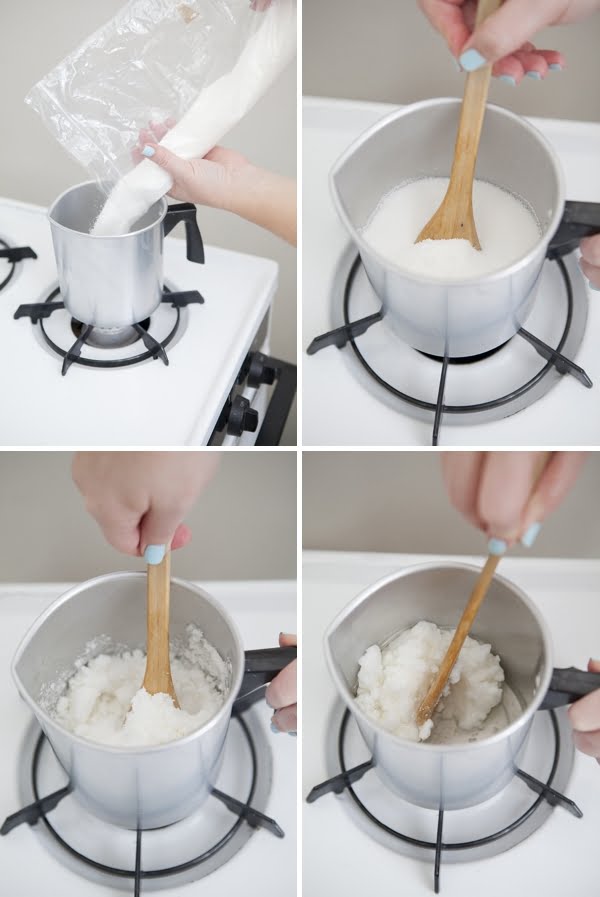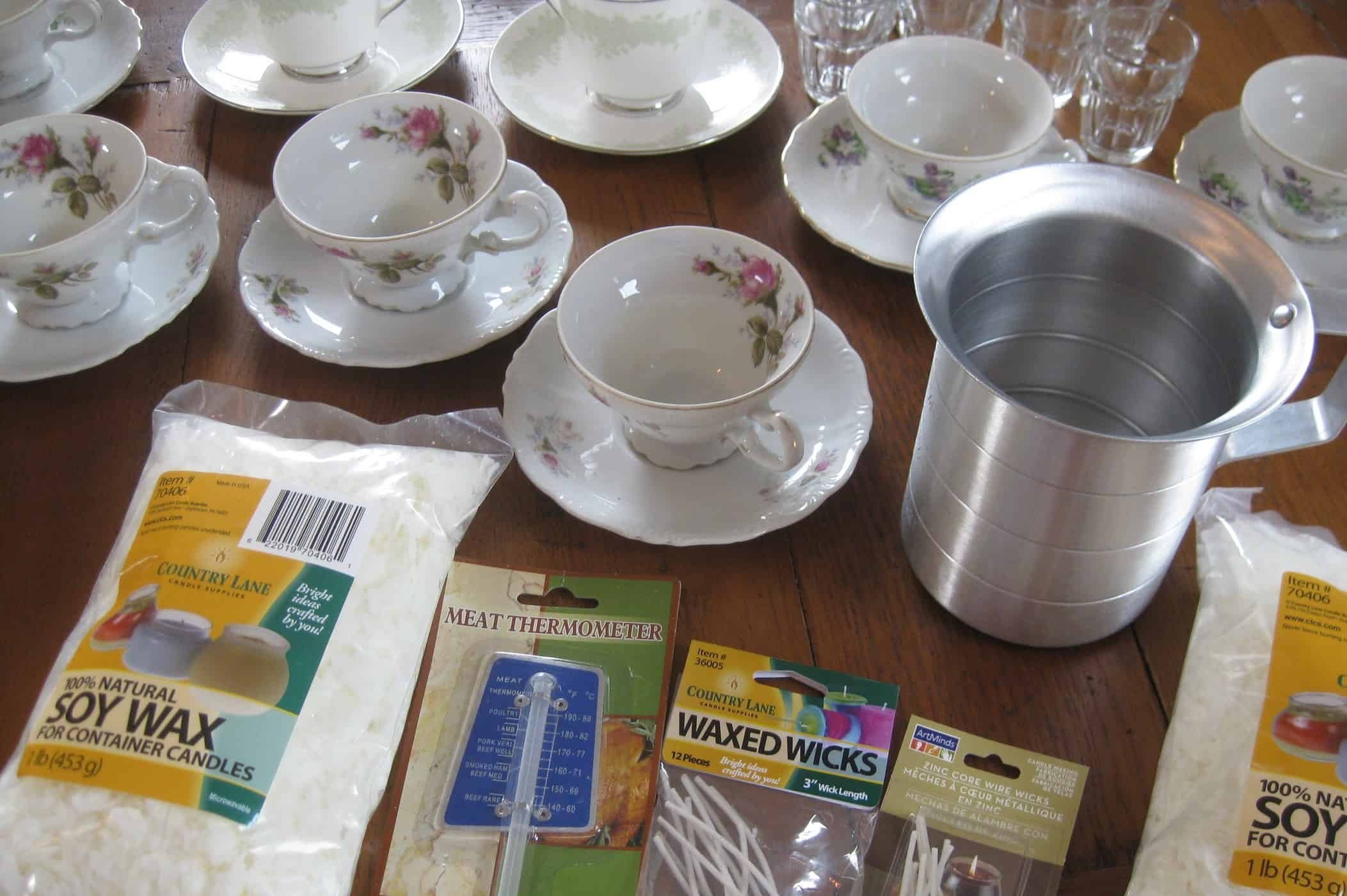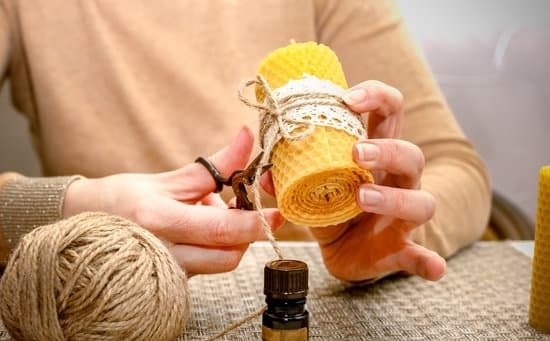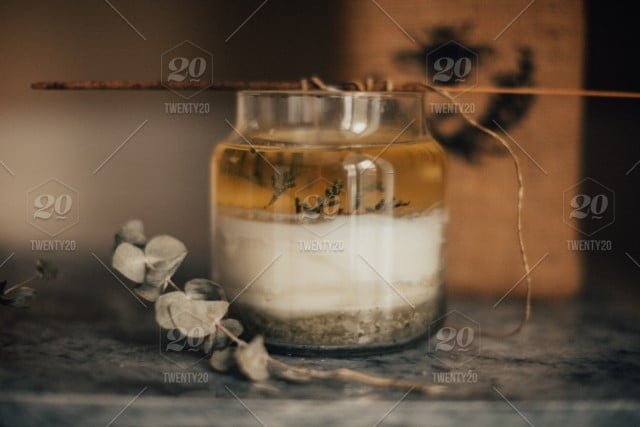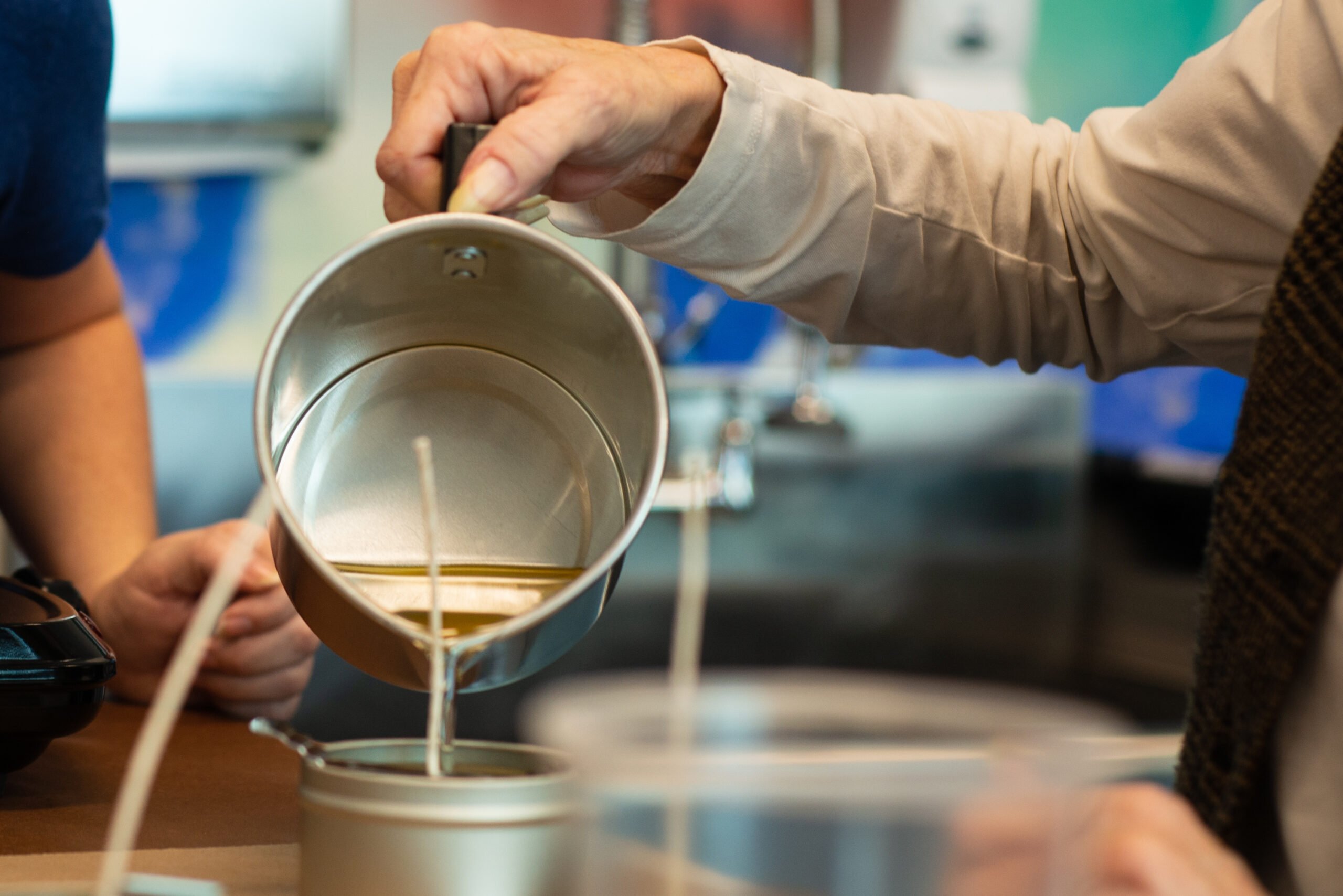Have you ever wondered, “Can I use food coloring for candle making?” The art of candle making has been a popular hobby and business venture for many people around the world. From traditional wax candles to modern soy or beeswax creations, there are various methods and materials used in this craft. One crucial element in candle making is color, as it can greatly influence the mood and ambiance of a space.
Color plays a significant role in candle making, whether it’s for personal enjoyment or for commercial purposes. Different colors can evoke specific emotions and create unique atmospheres when used in candles. Therefore, selecting the right type of coloring is essential to achieving the desired effect.
In this article, we will explore the role of color in candle making, the types of coloring used, and specifically address the question: Can food coloring be used in candle making? We will also discuss safety concerns when using food coloring in candles and provide helpful tips for effectively using food coloring to achieve various effects.
Additionally, we will touch on potential challenges that may arise when using food coloring and offer alternative options using natural ingredients for eco-friendly candle making. So, let’s delve into the colorful world of candle making.
The Role of Color in Candle Making
Understanding the Importance of Color in Candles
Color plays a crucial role in the world of candle making. It is not just an aesthetic choice, but it also contributes to the overall ambiance and mood that a candle can create. Different colors can evoke various emotions and feelings, making them a powerful tool for setting the tone in any space. Whether it’s for relaxation, romance, or meditation, the right choice of color can enhance the overall experience of using a candle.
The Impact of Different Colors on Mood and Ambiance
Each color has its own unique psychological influence on individuals. For example, warm colors such as red or orange tend to create a cozy and inviting atmosphere, while cooler tones like blue or green can promote calmness and tranquility. In candle making, understanding these effects allows for intentional crafting of candles to suit specific moods or occasions. Whether it’s for personal use or as gifts, the impact of color should not be underestimated when it comes to creating candles.
Potential Challenges and Solutions
It’s important to note that achieving the desired color in candles can sometimes pose challenges. Certain coloring agents may not blend well with the wax or could result in uneven distribution. In addition, some coloring methods may impact the burning characteristics of the candle.
However, through experimentation and careful consideration of different factors such as melting temperature and compatibility with wax types, these challenges can be overcome By understanding these challenges and employing suitable solutions, candle makers can achieve their desired results without compromising safety or quality.
Types of Coloring Used in Candle Making
When it comes to adding color to candles, there are various options available to candle makers. The type of coloring used in candle making can significantly impact the appearance and overall quality of the final product. Some common types of coloring used in candle making include liquid dyes, dye blocks, and powdered dyes. Each type has its own set of pros and cons that should be considered when deciding which option to use.
Liquid dyes are popular among candle makers due to their ease of use. They are readily available and come in a wide range of colors, allowing for easy customization. However, one downside is that they can sometimes alter the consistency of the wax, which may affect the burning characteristics of the candle.
Dye blocks are another option for coloring candles. These solid blocks need to be melted along with the wax, and they offer a more concentrated color compared to liquid dyes. However, some candle makers find it challenging to achieve a precise color match when using dye blocks.
Powdered dyes are also commonly used in candle making. They offer intense colors and are ideal for achieving vibrant hues in candles. However, they can be a bit messy to work with and may require some trial and error to achieve the desired shade.
While these traditional methods of coloring candles have their own merits, some individuals may wonder: “Can I use food coloring for candle making?” It is possible to use food coloring as a means of adding color to candles; however, there are certain risks and benefits associated with this practice that should be taken into consideration before doing so.
Can I Use Food Coloring for Candle Making?
Yes, you can use food coloring for candle making. Many people enjoy using food coloring as a cost-effective and easily accessible option for adding color to their candles. Food coloring comes in a wide range of colors, allowing for endless creative possibilities when crafting your candles. However, there are some important factors to consider when using food coloring in candle making.
Potential Risks and Benefits
When using food coloring in candle making, it’s important to be aware of the potential risks and benefits. One benefit of using food coloring is the affordability and availability of a wide range of colors.
On the other hand, some food colorings may not hold up well in the wax or could produce undesirable results. It’s crucial to carefully research and test different types of food coloring to determine which ones are suitable for your specific candle making needs.
Safety Concerns
There are also safety concerns to keep in mind when using food coloring in candles. Some food colorings may contain chemicals that could pose health risks when burned.
It’s important to thoroughly read the labels and research the ingredients of the food colorings you intend to use. Additionally, certain colorants may affect the burn quality and scent throw of your candles, so it’s essential to take these factors into consideration before adding any type of coloring to your candle wax.
Alternatives to Consider
If you have concerns about using traditional food coloring in your candles, there are alternatives to consider. Natural options such as powdered herbs, spices, or vegetable-based dyes can be used to achieve beautiful colors while also being eco-friendly and safe for burning.
These natural alternatives provide an opportunity for environmentally conscious candle makers to experiment with unique hues while minimizing potential health risks associated with synthetic dyes. Additionally, there are specially formulated candle dyes available that are specifically designed for use in candles, offering more predictable results and peace of mind when it comes to safety.
Safety Concerns When Using Food Coloring in Candles
When it comes to using food coloring in candle making, there are some important safety concerns to keep in mind. While it may be tempting to use what you have on hand, there are specific precautions that need to be taken into consideration when using food coloring in candles.
Here are some safety concerns when using food coloring in candles:
1. Potential Health Risks: Certain types of food coloring may contain ingredients that can release harmful chemicals when burned. These chemicals can potentially pose health risks when inhaled.
2. Flammability: Some food colorings contain water or other flammable substances that can increase the risk of the candle catching fire or producing excessive smoke.
3. Color Stability: Food coloring may not produce the desired color stability when mixed with wax, leading to uneven or unpredictable results.
While it is possible to use food coloring for candle making, it is important to take these safety concerns into account before proceeding. It is also important to note that there are alternative options available for safer coloring methods in candle making.
To ensure the safety of your homemade candles, consider exploring other options such as using specially formulated candle dyes or natural ingredients for a more eco-friendly approach. By being mindful of these safety concerns and exploring alternative options, you can continue creating beautiful colored candles while prioritizing safety.
Tips for Using Food Coloring in Candle Making
Using food coloring in candle making can be a fun and cost-effective way to add color to your candles. Whether you are a beginner or an experienced candle maker, food coloring offers a wide range of options for creating unique and vibrant candles.
When using food coloring for candle making, there are a few tips that can help you achieve the best results:
1. Start with the right supplies: Make sure to use gel-based or liquid food coloring that is specifically designed for use in candles. Avoid using powdered food coloring as it may not mix well with the wax.
2. Test the colors: Before adding the food coloring to your melted wax, test a small amount to see how the color will turn out once the wax has set. This will help you adjust the intensity of the color as needed.
3. Mix thoroughly: When adding the food coloring to your melted wax, make sure to mix it thoroughly to ensure an even distribution of color throughout the candle.
4. Experiment with combinations: Don’t be afraid to mix different colors of food coloring to create unique shades and hues for your candles. Experimenting with color combinations can lead to stunning and unexpected results.
5. Be mindful of proportions: It’s important to use only a small amount of food coloring in relation to the amount of wax you are using. Too much coloring can affect the consistency and quality of the candle.
By following these tips, you can effectively use food coloring in your candle making process and create beautiful, colorful candles for yourself or as gifts for others.
Potential Challenges and Solutions
Candle making has become an increasingly popular hobby and small business venture for many people. The process of making candles involves various methods and materials, including the use of different types of coloring to achieve the desired aesthetic. Color plays a crucial role in candle making, as it can impact the mood and ambiance of the environment where the candles are used.
When it comes to coloring options for candle making, there are several choices available to enthusiasts. These options include synthetic dyes, liquid dyes, color blocks, and even natural colorants. However, one common question that arises among beginners is whether food coloring can be used for candle making.
The answer is yes, food coloring can be used for candle making. However, it is important to note that using food coloring in candles comes with potential risks and benefits. One of the main concerns with using food coloring in candles is that they may not always yield vibrant or long-lasting colors. Additionally, some types of food coloring may affect the burning properties of the wax, leading to safety concerns.
| Potential Risks | Potential Benefits |
|---|---|
| May not yield vibrant or long-lasting colors | Availability in a wide range of colors |
| May affect burning properties of wax | Ease of accessibility and affordability |
Conclusion
Candle making has become an increasingly popular hobby and craft in recent years, with many individuals enjoying the creative process of making their own candles. One important aspect of candle making is the use of color, as it can greatly impact the mood and ambiance of a space when the candle is burning. There are various methods and materials for coloring candles, and one question that often arises is whether food coloring can be used for this purpose.
When it comes to coloring candles, there are several options available to crafters. These include liquid dyes specifically designed for candle making, color blocks or chips, powder dyes, and even natural ingredients such as herbs and spices. However, some people wonder if they can use food coloring for candle making as a more accessible and budget-friendly alternative.
The use of food coloring in candle making is possible, but it does come with some potential risks and benefits. One benefit is that food coloring is readily available in most households and can offer a wide range of colors to choose from. However, it’s important to note that food coloring is water-based, which means it may not mix well with the wax base used in candle making.
This can result in uneven color distribution and an overall lower quality finish. Additionally, certain types of food coloring may produce undesirable results or pose safety concerns when burned. While using food coloring is an option, there are important considerations to keep in mind for both aesthetic and safety reasons.
| Pros | Cons |
|---|---|
| Readily available | Water-based nature may not mix well with wax |
| Wide range of colors | Potential safety concerns when burned |
Bonus Section
In conclusion, the use of food coloring in candle making is a popular topic among DIY enthusiasts, but it comes with potential risks and limitations. While food coloring can be used to add vibrant hues to candles, it may not always produce the desired results and could pose safety concerns. It’s important for candle makers to consider alternative options for coloring their candles, especially if they are looking for natural and eco-friendly alternatives.
When it comes to experimenting with color in candle making, there are various types of coloring options available in the market. While some crafters may opt for food coloring due to its accessibility and affordability, others may choose to use natural ingredients such as herbs, spices, or even essential oils. These natural alternatives not only offer a safer option for coloring candles but also provide unique scents and therapeutic properties.
In summary, while food coloring can be used for candle making, it is essential for crafters to approach this method with caution. Considering the potential risks and limitations involved when using food coloring in candles, exploring alternative natural ingredients can be a great way to achieve beautiful colors while prioritizing safety and sustainability in candle making. By incorporating natural dyes into their creations, crafters can elevate their candle making experience while contributing positively to the environment.
Frequently Asked Questions
Can You Use Food Colouring When Making Candles?
Yes, food coloring can be used when making candles, but it’s important to keep in mind that it may not always produce the desired color or may affect the burning of the candle. It’s best to use liquid food coloring specifically designed for candle making to ensure better results.
What Coloring Is Safe for Candles?
The safest coloring for candles is dye specifically made for candle making. These dyes are non-toxic, highly concentrated, and designed to withstand the high temperatures of melted wax without affecting the quality or burn of the candle. They come in various forms such as liquid, chips, or blocks and provide a wide range of color options.
What Is a Good Substitute for Candle Dye?
A good substitute for candle dye is crayons or natural colorants such as spices, herbs, or dried flowers. However, it’s important to note that these substitutes may not dissolve well in the wax and can affect the scent throw and burning properties of the candle. For best results, it’s recommended to use dyes made specifically for candle making.

Welcome to my candle making blog! In this blog, I will be sharing my tips and tricks for making candles. I will also be sharing some of my favorite recipes.

